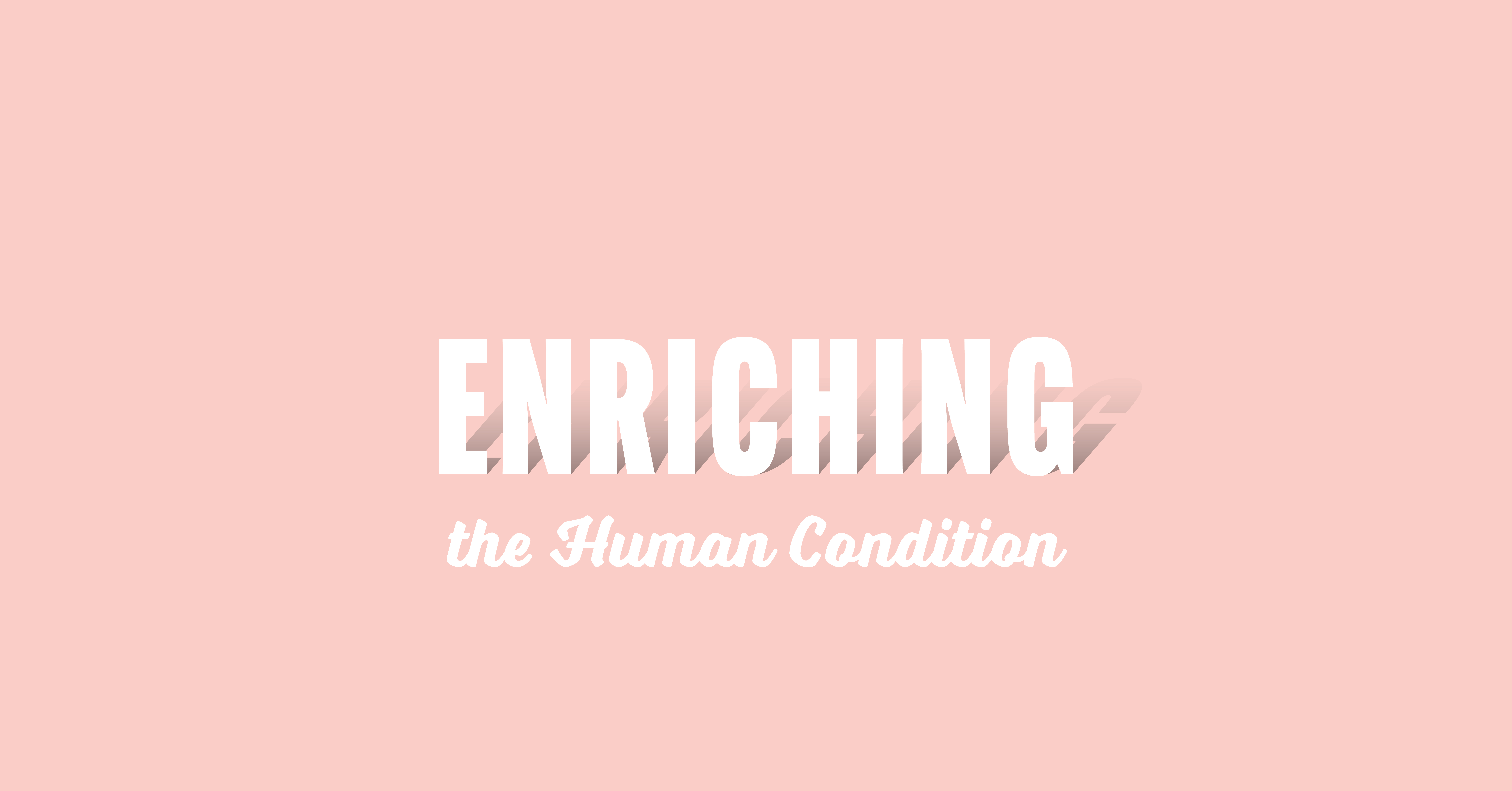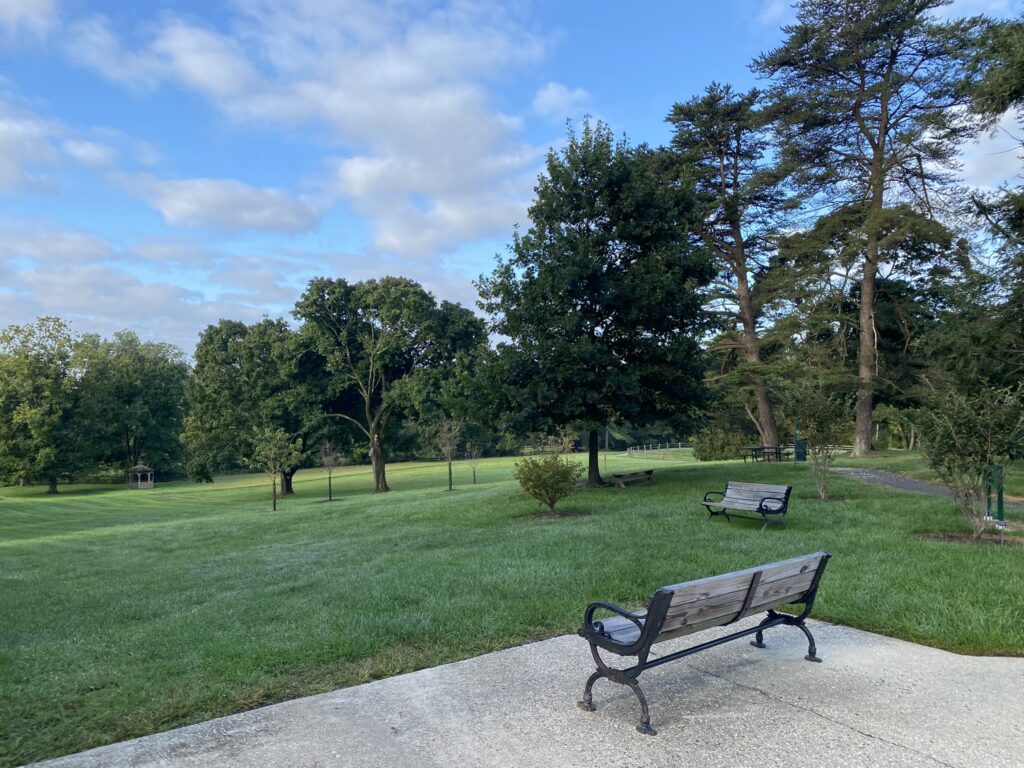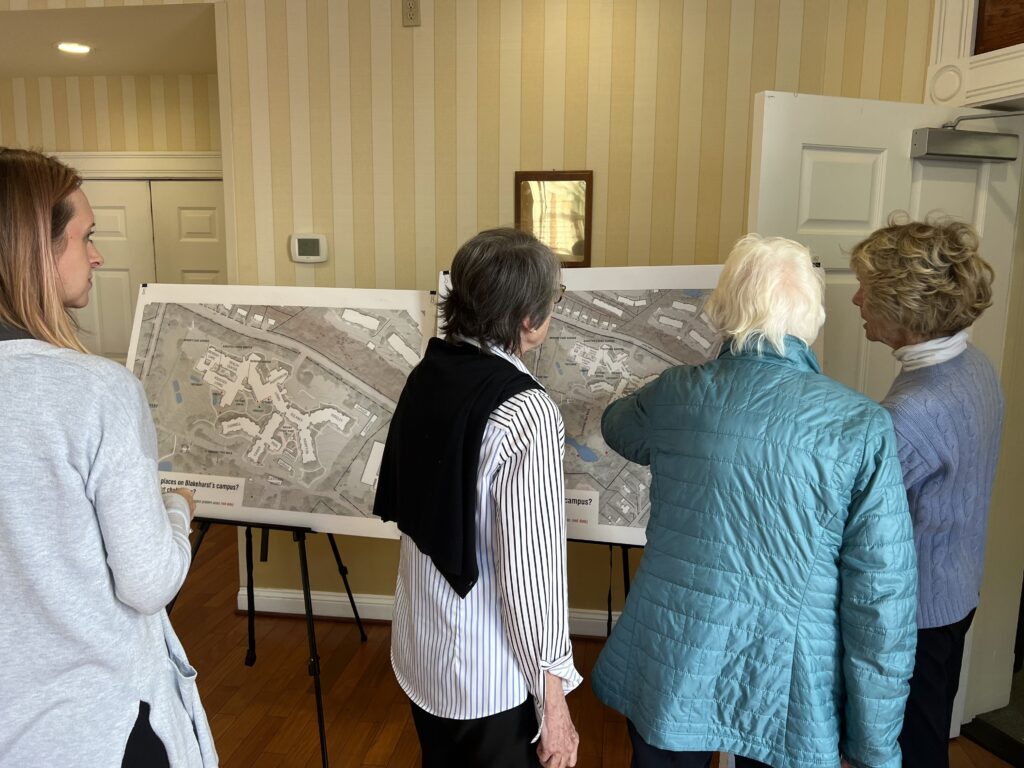The following has been modified from an essay written for Mahan Rykiel Associates.

At Mahan Rykiel Associates (MRA), in Baltimore, Maryland, I am an urban planner who’s fortunate to work on projects of all types and scales. I’ve been working with the firm for the past ten years, and was first drawn to the company by the language it used when talking about shaping the built environment.
Through our designs, MRA strives to construct meaning and build relationships in the world . A fundamental intention of our work is to enrich the human condition. You’ll find that specific phrase—“enrich the human condition”—throughout our website and in our visionary language; but what, exactly, does it mean?
Rooted in my understanding of the scientific studies of environmental enrichment, I believe it serves as a directive to create stimulating and novel landscapes which enhance peoples’ quality of life.
Environmental Enrichment
Environmental enrichment (EE) is a process of stimulating the brain by enhancing the physical and social environment. Scientists study EE by enhancing living conditions to facilitate sensory, cognitive, motor, and social interactions, leading to observed improvements in learning and memory (Srivas & Thakur, 2020; Sampedro-Piquero & Begega, 2017).
Studies of EE suggest that richer, more stimulating environments—filled with novelty and complexity—lead to increased brain activity and can have a positive impact on health and well-being. Components of enriched environments typically include elements for increased physical activity, a range of objects to stimulate the senses, and a periodic rotation and/or relocation of objects to generate a sense of newness (Nithianantharajah & Hannan, 2006).
The benefit of the enriched environment model, compared with the default/standard environment, is that it has a variety of positive effects on a cellular, molecular, and behavioral level. For instance, enriching environments have been shown to counteract stressors along with reducing anxiety and depression (Sampedro-Piquero & Begega, 2017; Flore-Ramos et al., 2022). Animals living in enriched conditions are more relaxed and less impulsive (Sampedro-Piquero & Begega, 2017). Time in enriched environments increases curiosity, exploration, and creativity (Sampedro-Piquero & Begega, 2017; Nanda et al., 2021). Complex environments improve cognition, increase brain plasticity, and yield a better capacity for learning and short-term memory, as well as reduce memory decline in aged animals (Sampedro-Piquero & Begega, 2017; Nithianantharajah & Hannan, 2006). Similarly, environmental enrichment is connected to the development of new neurons and a greater capacity for resilience to neurological disease and decline (Sampedro-Piquero & Begega, 2017; Nithianantharajah & Hannan, 2006).
While EE studies have primarily investigated impacts of enriched environments on rodents, the research suggests that similar effects occur in the human brain (e.g., Flores-Ramos et al., 2022), and recent studies have sought to understand what geographical and physical characteristics might constitute enrichment in human environments (Kühn et al., 2017).
EE and Environmental Design
According to the lifespan theory, human development is an ongoing, lifelong process. With environmental enrichment, the “sensory, cognitive and motor stimulation through interaction with the environment from birth to old age has a key role in refining the neuronal circuitry required for normal brain function” (Nithianantharajah & Hannan, 2006, p. 697).[1] Taking this to heart, designers are recognizing the importance of creating stimulating, complex, and novel environments, from playground design all the way to long-range planning for Life Plan Communities.
Youth and Play
The benefits of EE have been observed to be most impactful during neurodevelopment of youth. A lack of stimulation could lead to impaired cognitive development. On the other hand, if enrichment begins prior to adulthood, there may be additional benefits for the developing brain (Nithianantharajah & Hannan, 2006). Through play, children can expand their problem-solving abilities; develop language, math, and social skills; cope with stress; and learn to regulate their emotions (Yogman, 2023).
Aging
While EE has significant impacts during neurodevelopment of youthhood, enrichment can continue with benefits during adulthood and throughout the aging process.
“Experimental studies have shown that environmental enrichment during aging attenuates the age-related changes in cortical thickness, dendritic branching, spine density, neurogenesis and gliogenesis, which further improve cognitive performance in old individuals” (Srivas & Thakur, 2020, citing Mora et al., 2007).
Many of the physical and cognitive changes that adults face as they age are not inevitable consequences of getting older; rather, there are environmental and social characteristics which affect our health, functioning, and quality of life. Research indicates that the physiological process of aging in the brain can be modulated by environmental factors (Mora et al., 2007). Environmental enrichment can mediate age-associated changes in cognition, related to both basic cognitive function (i.e., attention, perception, memory) and to higher level cognitive function (i.e., speech and language; decision making; executive control; intelligence), as well as improve cognitive reserve (impacting our resilience to disease or injury).
Similarly, animal studies suggest that EE could aid in both treatment and recovery of several age-related dysfunctions in the brain (Srivas & Thakur, 2020). For this reason, design should be seen as a complementary form of care.
Blakehurst Life Plan Community
I have been incorporating my research into science-informed designs in my work at MRA to promote happiness and well-being through our projects. As part of a landscape master plan that my team has been developing for the Blakehurst Life Plan Community, I have investigated studies on environmental enrichment in the context of healthy aging and aging-friendly design.

The World Health Organization (WHO) defines healthy aging as “the process of developing and maintaining the functional ability that enables wellbeing in older age.”
Aging is a complex, physiological process that impacts how we think, feel, and move. As we age, we tend to experience a decrease in our executive functioning at the same time as motor system performance declines. Additionally, while hearing and vision are most affected, we often experience changes in all sensory systems as we age. Meanwhile, aging populations face higher rates of chronic diseases. All these shifts impact our experiences on a daily basis.
But we also know that our daily experiences, in turn, impact how we think and feel. As it turns out, research shows that well-being later in life is closely related to one’s physical environment. Various environmental features offer prophylactic (disease-preventing) qualities and can be employed as a proactive approach to manage age-related health changes. Additionally, animal studies of environmental enrichment suggest that sensory-rich living conditions can help improve cognitive performance (Mora et al., 2007).
Aging is a complex, physiological process that impacts how we think, feel, and move—often creating challenges in our experiences on a daily basis. But we also know that our daily experiences, in turn, can impact (and improve!) how we think and feel.

The forthcoming Blakehurst Landscape Master Plan (anticipated end of summer 2024) outlines a series of physical and social design considerations that aim to produce an enriched experience for Blakehurst’s residents and staff.
Conclusion
By defining and putting into practice evidence-based strategies for designing well, I hope my team at MRA can demonstrate our awareness of and deliberate attention to experiences that enrich the human condition.
With my Design for Well-being research, I aim to help MRA stand fervently behind its vision and take directed action to make human well-being a prominent tenant of our operations and work. To deliver on the promise of enriching the human experience through my work—at MRA and beyond—I openly share my research and my work to help point our profession toward a new design ethos—one that prioritizes the environmental and social conditions for human flourishing.
References
Flores-Ramos, M., Yoldi-Negrete, M., Guiza-Zayas, R. et al. (2022). An Indicator of environmental enrichment to measure physical, social and cognitive activities in human daily life. BMC Psychiatry (22). https://doi.org/10.1186/s12888-022-03952-w
Kühn, S., Düzel, S., Eibich, P., Krekel, C., Wüstemann, H., Kolbe, J., Martensson, J., Goebel, J., Gallinat, J., Wagner, G. C., & Lindenberger, U. (2017). In search of features that constitute an “enriched environment” in humans: Associations between geographical properties and brain structure. Scientific Reports, 7(1. https://doi.org/10.1038/s41598-017-12046-7
Mora, F., Segovia, G., & del Arco, A. (2007). Aging, plasticity and environmental enrichment: Structural changes and neurotransmitter dynamics in several areas of the brain. Brain Research Reviews, 55(1), 78–88. doi:10.1016/j.brainresrev.2007.03.011
Nanda, U., Warner, G., Soja, R., Nautiyal, D., Hoetling, M., Disque, E., Pike-Seeley, L., Palti, I., Narayana, A., Olszewska, N., & Hadley, M. (2021). Enriched Environments for Brain Health that Foster Creativity, Promote Positivity, and Reduce Stress: A Neurogenesis Hypothesis. https://www.hksinc.com/how-we-think/reports/enriched-environments-for-brain-health-that-foster-creativity-promote-positivity-and-reduce-stress-a-neurogenesis-hypothesis/#download
Nithianantharajah, J., & Hannan, A.J. (2006). Enriched environments, experience-dependent plasticity and disorders of the nervous system. Nature Reviews Neuroscience, 7, 697-709. https://doi.org/10.1038/nrn1970
Sampedro-Piquero, P., & Begega, A. (2017). Environmental Enrichment as a positive behavioral intervention across the lifespan. Current Neuropharmacology, 15(4), 459-470.
Srivas, S., & Thakur, M. (2019). Aging of the Brain. In Rattan, S.I.S. (Eds.), Reference Module in Biomedical Sciences. DOI 10.1016/B978-0-12-801238-3.11398-4 Yogman, M. (2023). The Power of Play: How Fun and Games Help Children Thrive. Healthy Children. Retrieved from https://www.healthychildren.org/English/family-life/power-of-play/Pages/the-power-of-play-how-fun-and-games-help-children-thrive
[1] In fact, recent studies have suggested that physical exercise may have in utero effects of increased neurogenesis on the offspring of pregnant rodents (Bick-Sander, et al., 2006, as cited in Nithianantharajah & Hannan, 2006).
